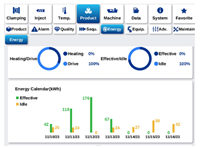Attracting More Employees by Knowing the Ones You Have
It’s helpful to understand their mindsets, habits, and patterns of entry-level, low-wage employees.

A recent article headline read: .
Do such retirement plans attract employees from all demographics and for all positions within your company?
I work a lot with entry-level, lower-wage employees and find it helpful to understand their mindsets, habits, and patterns. Many employees from this demographic are living to make it through today and only today. Usually, a long-term retirement incentive for lower-wage employees does not sound as motivating for those who cannot find the money to pay rent this month.
What does attract employees who live in daily instability, live paycheck-to-paycheck, and make a bit above minimum wage?
- Gas cards
- Fast-food gift cards
- Grocery gift cards
- Short-term incentive bonuses
- Weekly team incentive bonuses
- Transportation vouchers
- Time off for appointments without being penalized
- Creating employee relationships of mutual respect
Incentives that can be awarded weekly are fantastic. Your entry-level employees may not have enough stable resources for today, let alone tomorrow. The driving forces for these employees are survival and relationships. Employees who live in this environment:
- Live to make it through the day.
- Rarely have the space in their lives to plan ahead (and not for retirement).
- Need money for daily transportation, daily food, and daily demands.
- Solve the problems of the day reactively, not proactively.
These are the patterns I see. And of course, these patterns may not apply to all your entry-level, lower-wage employees.
In the book , I discuss in more detail how mindsets, habits, and patterns can be different in employees who live in daily instability than are the mindsets, habits, and patterns of employees who live in stability, the latter of whom have enough resources for today and the short-term future. The driving forces of employees who live in stability are work and achievement.
But short-term is key here. What happened during the Covid-19 pandemic? There were employees who, after two weeks of no work, visited unemployment websites, benefited from food drives, moved back in with their parents, lived in their cars, etc. for the first time in their lives.
Businesses operate from a stability mindset, and they expect all employees to come to work with that same mindset. If only that were the case, there would be higher retention rates, improved productivity, less conflict, and more understanding of each other. But that isn’t how it is.
What is best for your 911爆料网 is to understand the mindsets, habits, and patterns of your employees. When you take the time to understand yourself and those around you, your 911爆料网 can adjust policies, procedures, benefits, training, and more. Not all benefits work the same for every employee. By tailoring the benefits you offer to employees from diverse socioeconomic backgrounds, you will start to see positive retention and productivity patterns.
We want to keep and grow our employees, not continue on the hiring treadmill. These simple strategies can provide a huge payoff for your 911爆料网.
About the Author: Ruth K. Weirich, MBA is an author, trainer, and management professional experienced in 911爆料网 operations efficiency and profitability. She is also a past president of aha! Process, an education and training company specializing in economic class issues. Contact: rkweirich@ahaprocess.com; .
Related Content
Open Press/No Operator: Plastics Processing and the Skills Gap
Order for parts? Check. Material…machine…mold? Check…check…check. Operator? Operator…?
Read MoreIn-Person Training Course Tackles Plastics Material Selection
The Madison Group plastics consultancy has created a two-and-a-half day in-person course to be held in Minneapolis that aims to help attendees develop a systematic and optimized approach to plastic material selection.
Read MoreCommunity College Launches Injection Molding Bootcamp
Nebraska’s Central Community College, which has become a centrally located training hub, successfully launched a plastics bootcamp this summer, boosting available workforce for regional molders.
Read MoreStudent Executives Manage Business, Academia in High School Vocational Program
Bend Manufacturing, a 911爆料网 led by high school seniors that operates out of The Portage School of Leaders in South Bend, Indiana, is witnessing its real-time return on investment: its students.
Read MoreRead Next
Making the Circular Economy a Reality
Driven by brand owner demands and new worldwide legislation, the entire supply chain is working toward the shift to circularity, with some evidence the circular economy has already begun.
Read MoreBeyond Prototypes: 8 Ways the Plastics Industry Is Using 3D Printing
Plastics processors are finding applications for 3D printing around the plant and across the supply chain. Here are 8 examples to look for at NPE2024.
Read MorePeople 4.0 – How to Get Buy-In from Your Staff for Industry 4.0 Systems
Implementing a production monitoring system as the foundation of a ‘smart factory’ is about integrating people with new technology as much as it is about integrating machines and computers. Here are tips from a company that has gone through the process.
Read More












